#native north american plants
Text
Succulents Part 12--Bergenia, Bromeliads, Commelina, Orchids, Pontederia, and whatever that green thing is
Succulents are a wide variety of plants, spanning multiple orders. Some have succulent leaves while others have succulent stems. Cactuses are succulents, but not all succulents are cactuses. Defining what exactly makes a succulent is a little tricky. For example, cabbage leaves are considered by some to be succulent, but tulip and onion leaves apparently aren't.
All photos mine. Unedited.




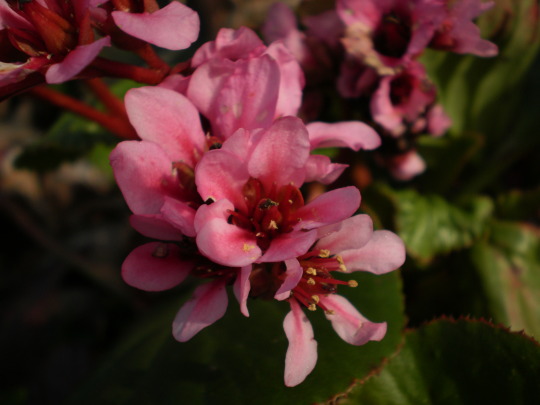
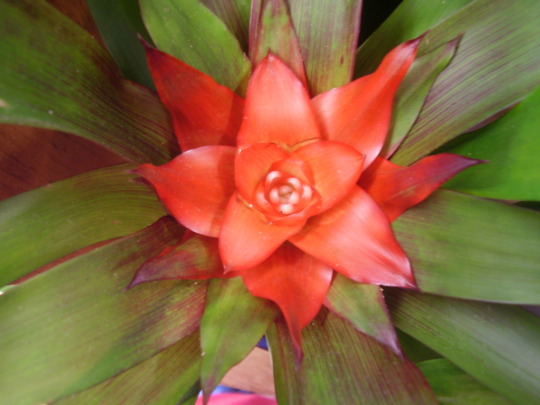
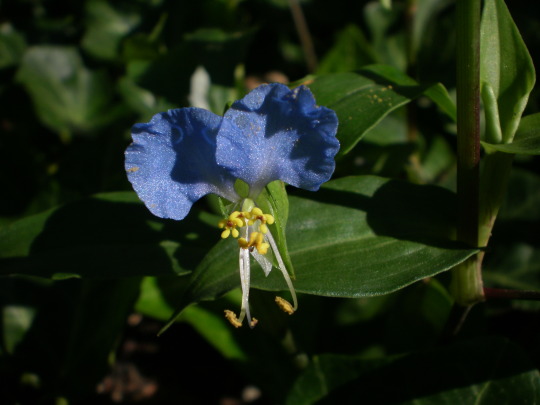
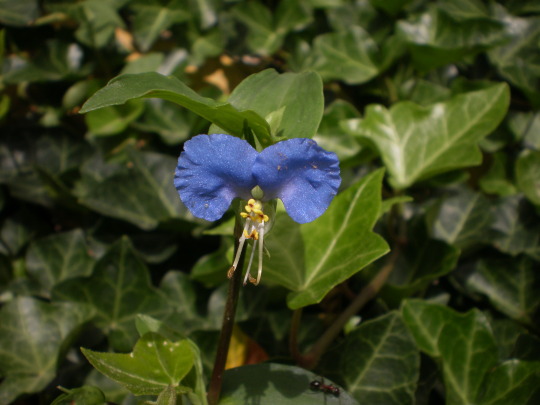


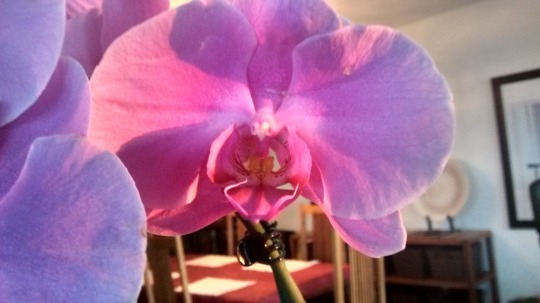





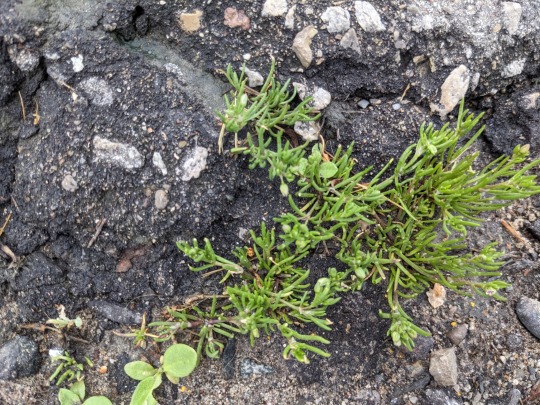
The green thing is maybe a spurrey, but I'm not sure. It's clearly a succulent, though. And that's all I got for you in the succulent department (not technically: milkweeds are succulent, but I have enough photos of them for a separate series)! Hope you've enjoyed. :)
Please don't grow water hyacinth (the light purple ones in the bottom photos), though if you're not in its native range. It's terribly invasive in the waterways. You can grow its native cousins, though! In southern Ontario, that's Pontederia cordata (pickerelweed).
Dayflower (the blue ones) on the other hand is native to the northeastern USA bordering southern Ontario and has crossed the border some time back. :)
#succulent plants#succulents#flowers#my photos#photography#blackswallowtailbutterfly#Bergenia#bromeliad#Commelina#dayflower#orchid#Pontederia#Pontederia crassipes#garden flowers#water hyacinth#invasive species#wildflowers#native North American plants#blue flowers#purple flowers#pink flowers#magenta flowers
6 notes
·
View notes
Text

The colors in my garden bring me joy.
Some floppy hollow joe-pye (Eutrochium fistulosum), scaly blazing star (Liatris squarrosa), mistflower (Conoclinium coelestinum), and gray goldenrod (Solidago nemoralis).
Virginia, USA
1 note
·
View note
Text
I was today years old when I learned that there is a native North American berry called the farkleberry. :O
It is in the same genus as the cranberry (also native).
0 notes
Text
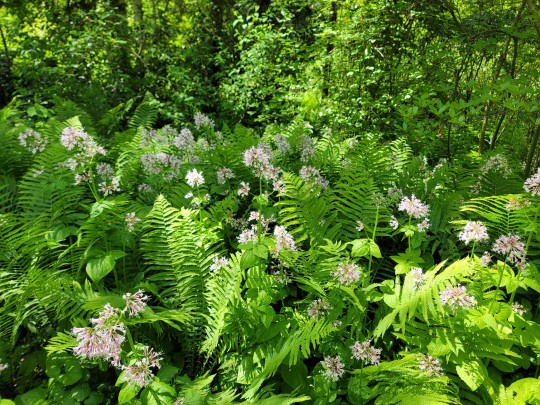

Ostrich Fern Garden at Mt Cuba - May 6th 2023
#for once i geniunely dont know what the flower is#ostrich fern#forest#nature#photographers on tumblr#spring#delware#mt cuba#eastern north american native plants
135 notes
·
View notes
Text

caulophyllum thalictroides
blue cohosh
albert fw vick jr, 1988, lady bird johnson wildflower center
13 notes
·
View notes
Text

Wisteria frutescens / American Wisteria at the Sarah P. Duke Gardens at Duke University in Durham, NC
#Wisteria frutescens#Wisteria#Fabaceae#American Wisteria#Native plants#Native flowers#Native vines#Plants#Flowers#Vines#Nature photography#photographers on tumblr#Sarah P. Duke Gardens#Duke Gardens#Duke University#Durham#Durham NC#North Carolina#🌺🌻
7 notes
·
View notes
Text
HEUCHERA
This week's Rhombus House Garden post is a simple PSA to let you know that I fucking love Heuchera (aka Coralbells).
They're shade tolerant, perennial and hardy in zone 4, divisible every 2-3 years so that then you have twice as many heucheras. They're native from Ontario to Georgia and Nebraska to Louisiana.
They are the "oops all berries!" of garden plants with leaves as bright and colorful as the flowers of other plants.
Check this out.
Simulate an autumnal forest floor from spring through frost.

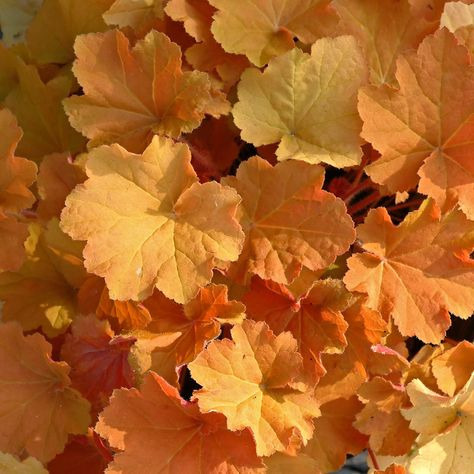
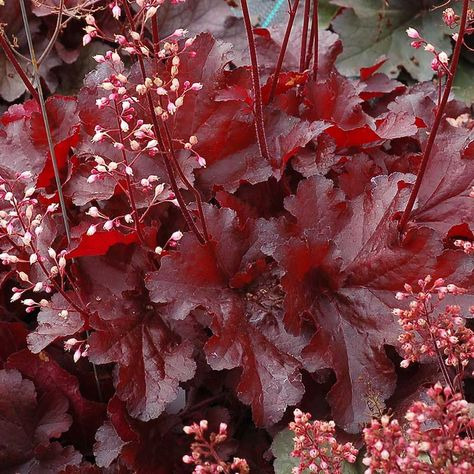
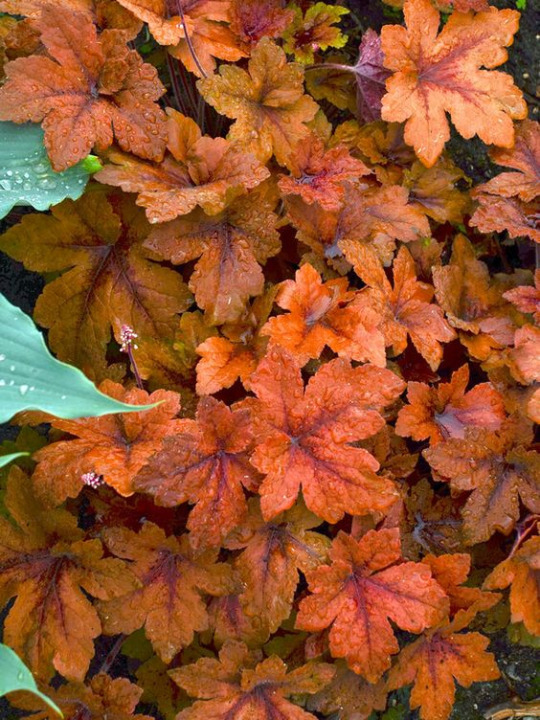
Or, go goth!
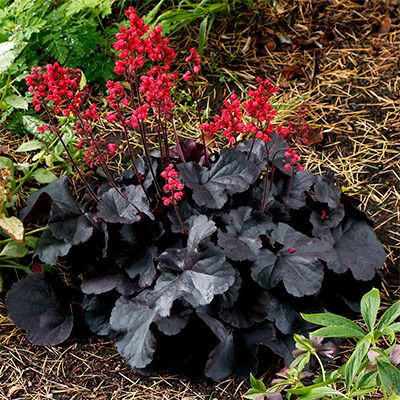

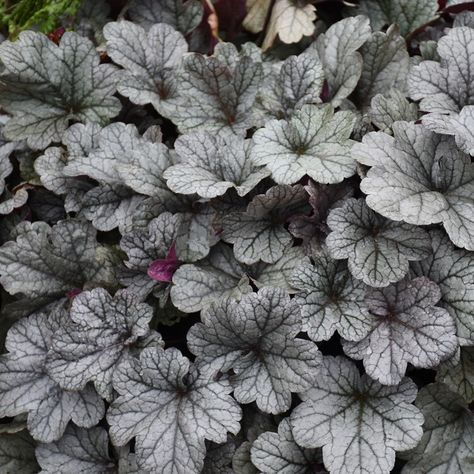

Get FANCY with variegation and coloring!
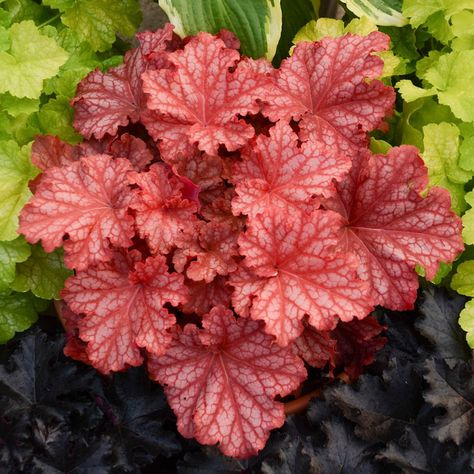

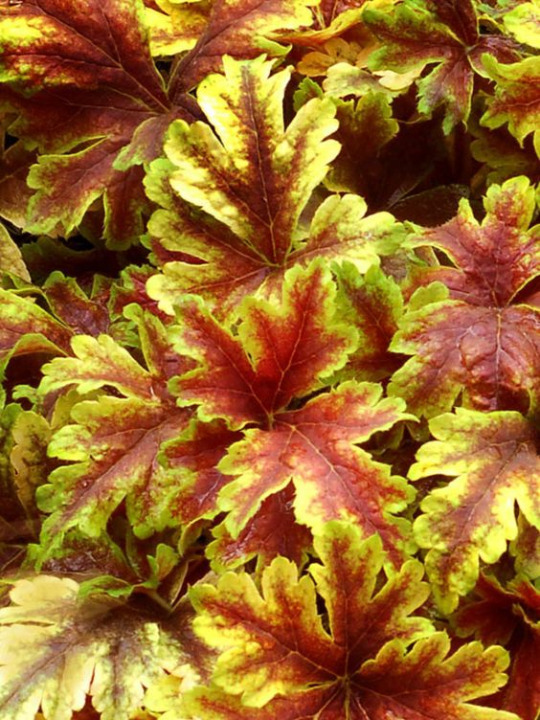

Celebrate your love for Color Theory!
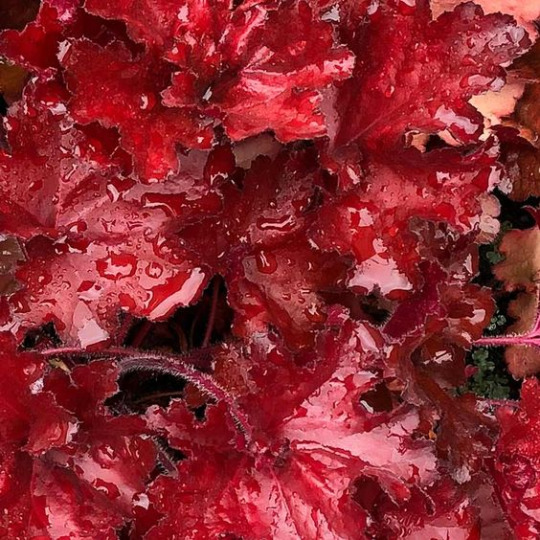
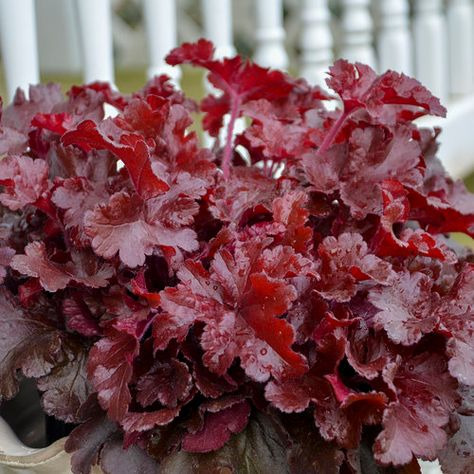


You can even do pastels if that's your jam.
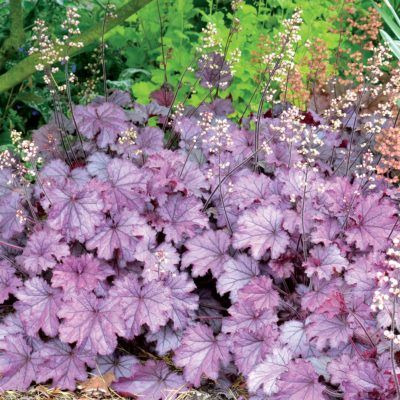
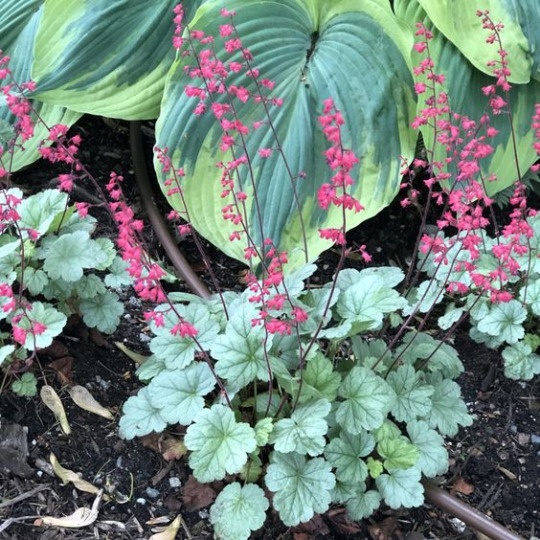
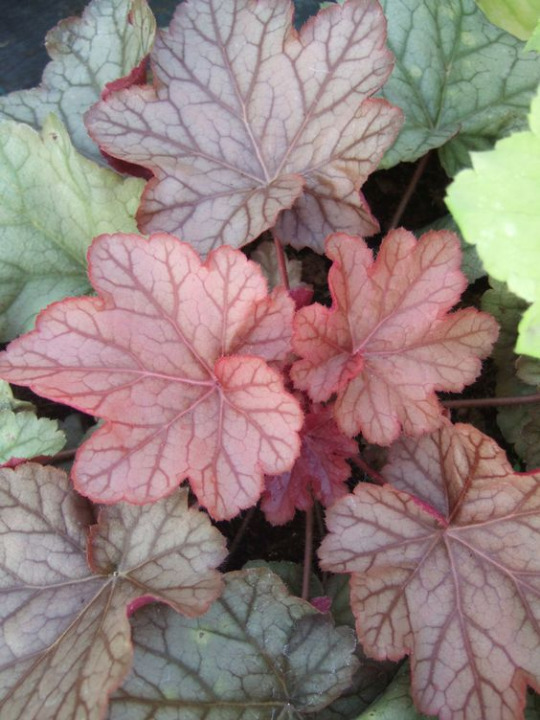

Anyways, please appreciate Heucheras. This barely scratches the surface of their beauty and variety!
37 notes
·
View notes
Text
How to Identify American Holly
Click here to learn more about the How to Identify article series.
Name: American Holly (Ilex opaca)
Range and typical habitat(s): Typically southeastern United States, from eastern Texas to the Atlantic coast, southern Missouri, and central Florida to scattered portions of New England. iNaturalist observations also place it in portions of Michigan, Illinois, Ohio, and Oklahoma, showing some expansion compared to the 2014 BONAP map, so its range may be expanding in response to climate change. In most of its range it is an understory tree growing in the shade of larger species. However, in Florida’s scrub habitat it grows as a shrub.

Photo by Derek Ramsay, GNU FDL 1.2
Distinguishing physical characteristics (size, colors, overall shapes, detail shapes): At first glance American holly looks quite similar to the European holly (Ilex aquifolium) so commonly used got holiday decorations (more about the differences between the two below.) It has medium to dark green oval-shaped leaves, sometimes with a yellowish tint, whose margins (edges) have concave curves between sharp points that are regularly spaced; large leaves may reach three inches long.

Photo by Famartin, CCA-SA-4.0-INTL
The American holly’s leaves have a leathery, stiff texture, and may appear waxy, and the underside is paler, often yellow in color. Each leaf has a central vein (midrib) that is depressed, appearing almost like a deep crease. Thinner veins branch off of both sides of the midrib. Some leaves may display smooth margins instead of the more typically spiky ones, especially when they are high enough to be out of the reach of browsing herbivores like deer.
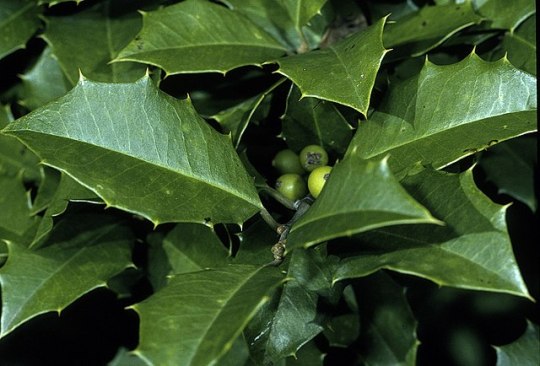
The foliage stays green throughout the year rather than being shed in fall; a given leaf may stay on the tree for up to three years before being displaced by a new replacement leaf. The leaves grow in an alternate pattern along a twig, with each leaf growing a little further along the twig than the last. The tree’s branches and trunk are covered in pale gray bark that is relatively smooth, but may have horizontal and vertical striations, along with various nodes and bumps, and might also play host to white patches of microlichen colonies. Other lichens, as well as mosses, also may add color to the American holly’s bark.
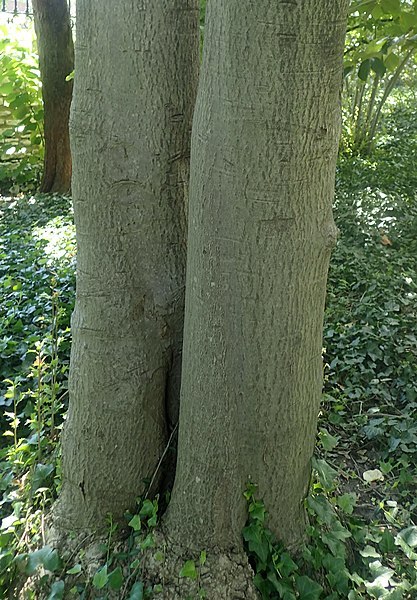
Photo by Krzysztof Ziarnek, CCA-SA-4.0-INTL
An exceptional specimen of American holly can reach almost 100 feet tall when mature, though it grows slowly. Such large trees are generally a century or more old, and the oldest on record was just a few years shy of 150.
The flowers of American holly are small (1/2″ or less across) with green centers and four (sometimes six) white petals that are broad with a rounded end, and whose tips curve back toward the plant. They grow in clusters of several flowers sprouting from one spot. American holly is dioecious, meaning that there are female and male plants; the males tend to reach sexual maturity a few years earlier than the females, but they all are generally reproducing by the age of ten.
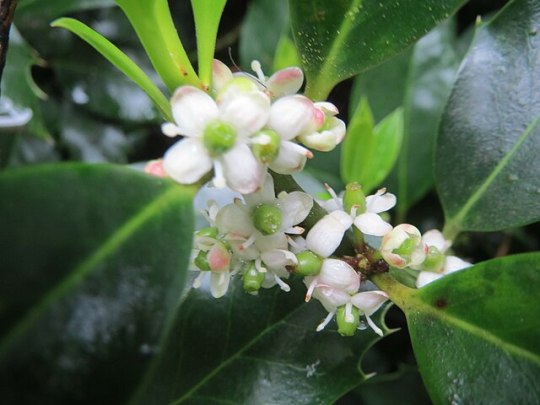
When fertilized by insects the female flowers then turn into the well-known red berries. Technically these are drupes rather than true berries, with four seeds apiece, and while they start out green they ripen to a bright red. The berries are popular with birds like cedar waxwings (Bombycilla cedrorum), but are toxic to humans and our pets.
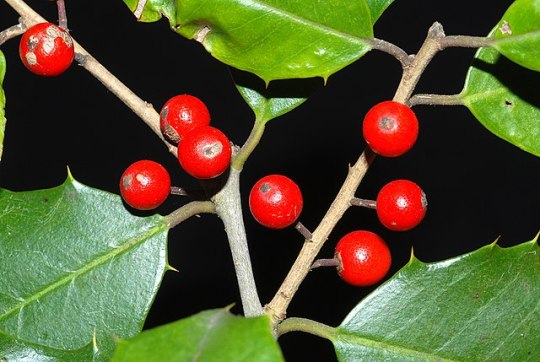
Photo by Douglas Goldman, CCA-SA-4.0
Other organisms it could be confused with and how to tell the difference: Due to their similarity, American holly and European holly may easily be confused at first glance, and both prefer the understory of a forest. However, the European species does not grow as large. The leaves of European holly are darker and have a glossier appearance; the edges may also be more warped where those of American holly lie comparatively flat. Moreover, European holly grows more commonly along the west coast of North America, and is more sparse throughout American holly’s native range, especially outside of cultivated spaces.

European holly (Ilex aquifolium)
Yaupon holly (Ilex vomitoria) is another species native to the southeastern North America, particularly the Gulf Coast states and the southern third of the Atlantic coast. It is a much smaller shrub that rarely exceeds thirty feet tall, and its leaves are round with serrated or scalloped edges rather than the pointed margins of American holly. The petals of the flowers may not curve as much as on American holly.

Yaupon holly (Ilex vomitoria)
Dahoon holly (Ilex cassine) also grows in the extreme southeastern United States, from Louisiana to the southern tip of North Carolina, and primarily along the coastline except in Florida where it can be found across much of the peninsula. Its leaves are longer and more slender than those of American holly, and the margins are almost entirely smooth except for a series of very small spikes.

Dahoon holly (Ilex cassine). Photo by Douglas Goldman, CCA-SA-4.0
Possumhaw (Ilex decidua) has long, slender leaves with a gently pointed tip and serrated edges. This deciduous plant drops its leaves in fall, unlike the evergreen American holly.

Possumhaw (Ilex decidua)
There are other plants that have similar leaves to American holly but that grow out of its range, such as the various species of Oregon grape (Mahonia spp.) in the Pacific Northwest, and holm oak (Quercus ilex), for which the genus Ilex was originally named.
Further reading:
USDA: American Holly
North Carolina Extension Gardener Plant Toolbox: Ilex opaca
Missouri Botanical Garden Plant Finder: Ilex opaca
Native Plant Trust: Ilex opaca – American holly
University of Connecticut Plant Database: Ilex opaca
Did you enjoy this post? Consider taking one of my online foraging and natural history classes or hiring me for a guided nature tour, checking out my other articles, or picking up a paperback or ebook I’ve written! You can even buy me a coffee here!
#holly#American holly#North America#native plants#Ilex#shrubs#plants#plant identification#nature identification#botany#trees#ecology#conservation#biodiversity#long post#nature#Yule#Christmas#holidays#scicomm
10 notes
·
View notes
Text
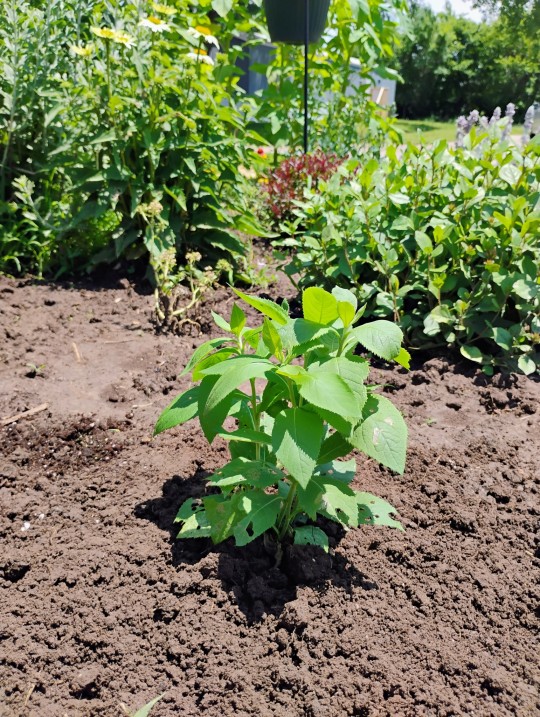
June 1
My farmer's market has some vendors selling some awesome plants - for so late in the season I was thrilled!
This is Ironweed vernonia native to the Flint Hills. Super excited to see a vendor getting into the native plants.
My garden has yarrow, echinacea, and now Ironweed. It will produce bright purple spiky flowers in July. I will win the native plant game somehow.
I also nabbed some nasturtiums and a VERY pretty dwarf crepe myrtle (mocha red).
Better yet, this was the vendor's shop. It was soooo cute inside.

Got some decorative peppers to try and maintain some color in my yard as we get into August. I need to find some mums somewhere.
#mobile home garden#trailer park garden#trailer park tom bombadil#gardening#gardeners on tumblr#north american native plants#flint hills#garden#ironweed vernonia#nasturtiums#cottage core#flower garden#gardenblr#gardeners of tumblr
4 notes
·
View notes
Text


bloodroots sound more metal than they are. but-- spooky season is here, soooo
(my photos: April 2021)
#botany#bloodroot#Sanguinaria canadensis#spring ephemerals#trees and forests#woodland#native plants#plantblr#nature photography#spooky season#original photography on tumblr#north american flora#midwestern flora
7 notes
·
View notes
Text
Look at my tall baby. Ve's not even a year old yet.
I'm naming ves.....hmmmmm. Morgana. Because I have two nickels. And I shouldn't. Vel pronouns are ve/ves/vel/veself because why not??
Ve's been in a white five gallon bucket since ve germinated and got vel first baby leaves. The only time ve gets water is when it rains, and I haven't added any fertilizers or anything to the soil. I don't remember what kind of potting soil I put in here but it wasn't Miracle Grow because their prices skyrocketed so we can no longer afford it :(

[ID: A selfie photo of a person with a tiedie pink and blue shirt that reads "ask me my pronouns", with sunglasses emojis edited over its eyes, standing with an American persimmon seedling tied with a purple ribbon to a bamboo stake, which is so tall it comes up to the top of the person's head. The persimmon has pointed oval shaped leaves with yellow central leaf veins, and a dark brown stem or trunk. End ID.]
#described images#Rjalker trains its gardening skill#diospyros virginiana#common persimmon#American persimmon#diospyros#georgia native plants#north American native plants#seedlings#tree seedlings#Morgana the common persimmon#persimmons#persimmon seedlings
2 notes
·
View notes
Text
Succulents Part 11--Wild Impatiens
Succulents are a wide variety of plants, spanning multiple orders. Some have succulent leaves while others have succulent stems. Cactuses are succulents, but not all succulents are cactuses. Defining what exactly makes a succulent is a little tricky. For example, cabbage leaves are considered by some to be succulent, but tulip and onion leaves apparently aren't.
All photos mine. Unedited.
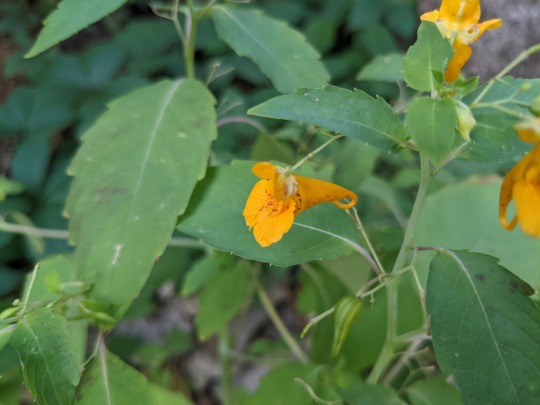






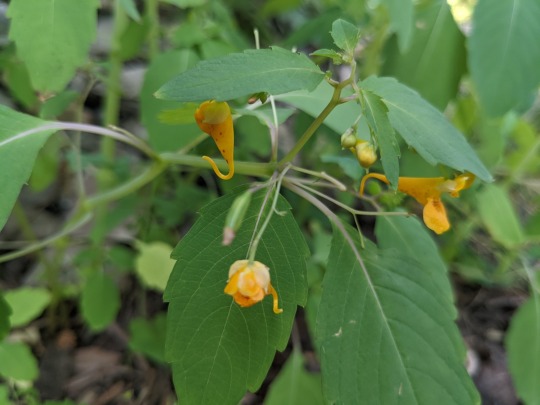
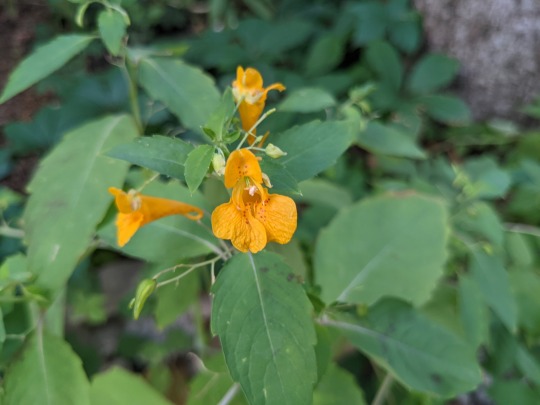
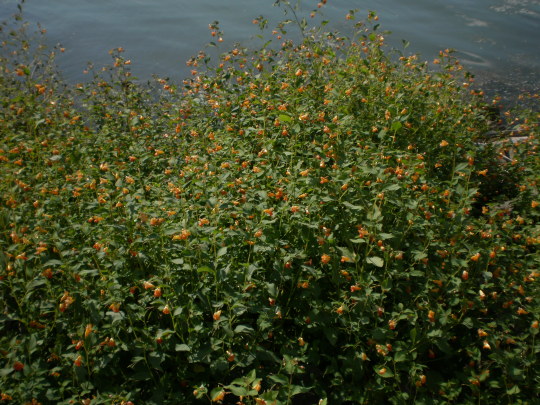
Did you know we have native Impatiens in Ontario, Canada? They're called jewelweed or touch-me-not. :) I have them in my garden and they can also be found in ravines and on shorelines in swampy areas. They like a lot of water. In the Niagara escarpment under the heavy canopy with the constant moisture? They'll grow on trees, out of rocks, wherever. They're native annuals, so they rely on reseeding, but do they ever reseed! The young shoots, thankfully, are edible cooked.
#succulent plants#stem succulents#succulents#flowers#my photos#photography#blackswallowtailbutterfly#Impatiens#wild impatiens#spotted touch-me-not#garden flowers#jewelweed#spotted jewelweed#Impatiens capensis#wildflowers#my garden#native North American plants
5 notes
·
View notes
Text
What I was taught growing up: Wild edible plants and animals were just so naturally abundant that the indigenous people of my area, namely western Washington state, didn't have to develop agriculture and could just easily forage/hunt for all their needs.
The first pebble in what would become a landslide: Native peoples practiced intentional fire, which kept the trees from growing over the camas praire.
The next: PNW native peoples intentionally planted and cultivated forest gardens, and we can still see the increase in biodiversity where these gardens were today.
The next: We have an oak prairie savanna ecosystem that was intentionally maintained via intentional fire (which they were banned from doing for like, 100 years and we're just now starting to do again), and this ecosystem is disappearing as Douglas firs spread, invasive species take over, and land is turned into European-style agricultural systems.
The Land Slide: Actually, the native peoples had a complex agricultural and food processing system that allowed them to meet all their needs throughout the year, including storing food for the long, wet, dark winter. They collected a wide variety of plant foods (along with the salmon, deer, and other animals they hunted), from seaweeds to roots to berries, and they also managed these food systems via not only burning, but pruning, weeding, planting, digging/tilling, selectively harvesting root crops so that smaller ones were left behind to grow and the biggest were left to reseed, and careful harvesting at particular times for each species that both ensured their perennial (!) crops would continue thriving and that harvest occurred at the best time for the best quality food. American settlers were willfully ignorant of the complex agricultural system, because being thus allowed them to claim the land wasn't being used. Native peoples were actively managing the ecosystem to produce their food, in a sustainable manner that increased biodiversity, thus benefiting not only themselves but other species as well.
So that's cool. If you want to read more, I suggest "Ancient Pathways, Ancestral Knowledge: Ethnobotany and Ecological Wisdom of Indigenous Peoples of Northwestern North America" by Nancy J. Turner
47K notes
·
View notes
Text
AAAHHH I FOUND VOLUNTEER FLAME AZALEAS IN MY YARD
HASHTAG BLESSED HASHTAG WINNING
🔥🔥🔥🔥🔥🔥🔥🔥🔥🔥🔥🔥

#I thought they were seedlings from the Japanese magnolia!!!#this just after I went to clear ivy to plant a bunch of pawpaws I got from work and instead found a patch of elderberry sprouts#and finally I got the pawpaws in today and was like#oh look what just started leafing I'm probably gonna have to pull those OH FUCK#flame azaleas are not actually in the azalea genus which is from asia! they're a native north american rhododendron with similar blooms#and they're ORANGE and I LOVE THEM
0 notes
Text



Seaside Goldenrod - Solidago sempervirens
I found this beauty basically at the edge of high tide, 40 years ago there used to be a sizable beach community on Moores Beach, through comprehensive storm and sea level rise that community is now about 50' into the surf. Aside from the occasional brick and electrical wire no trace remains, often growing in that debris is Seaside Goldenrod
Seaside Goldenrod is a rather showy extremophile, occupying literal Beach dune constantly subject to salt and wave action. Like all Goldenrods, it produces plumes of yellow flowers from August-October. These plumes are triggered by increasing dark periods and it's native habitat range and flowering time coincides with the monarch butterfly's migration along the Atlantic coastal flyway. These plants are perennials, they can reach my height up to 6 feet! Seeds require no stratification and can just be sown immediately (try it at home).
I've found the stems and leaves to feel more succulent like on this goldenrod (given the dry saline conditions its not surprising). Ecology wise Goldenrods are always a powerhouse, not only do they serve as excellent pollinator food sources and beach dune erosion control (along side american beachgrass) they provide nesting habitats for migratory shorebirds like piping plover and kill deer.
The native range of seaside Goldenrod is coastal areas and salt marshes from Maine to Texas, occasionally colonizing our salty highways (which is way more beneficial than the typical phramite if I'm being honest).
There are no known ethnobotanical uses for seaside Goldenrod specifically, however, other scented Goldenrod flowers make a lovely tea. I would personally never attempt a tea with these flowers because they aren't fragrant and are usually packed with bees throught the fall!
#happy hunting#fall flowers#goldenrod#seaside goldenrod#solidago sempervirens#new jersey beach flowers#plant profiles#north american native flora
9 notes
·
View notes
Text

hepatica nobilis var. acuta
sharplobe hepatica
albert fw vick jr, 1989, lady bird johnson wildflower center
7 notes
·
View notes